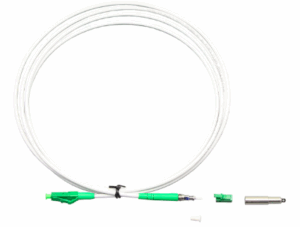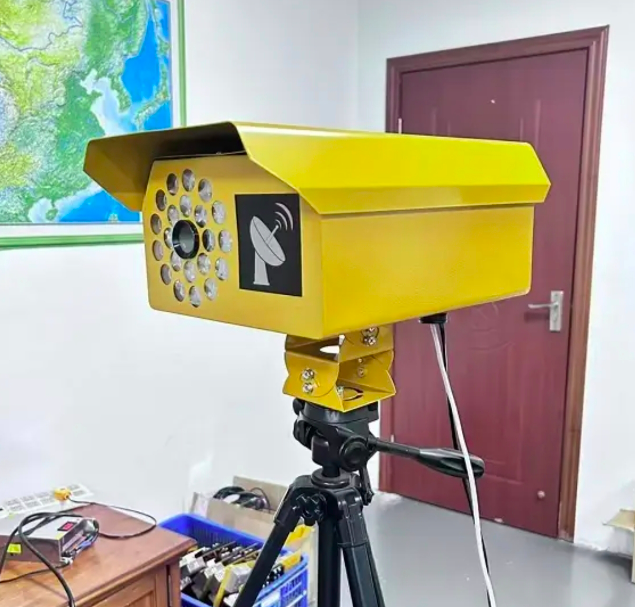目录
Importance of Proper FTTH Drop Patch Cord Storage
Correct storage of FTTH Drop Patch Cords plays a critical role in safeguarding their optical integrity and ensuring their long-term reliability in fiber networks. According to industry reports, approximately 15% of premature fiber failures are linked to poor storage conditions such as exposure to high humidity, dust accumulation, or mechanical stress.
It’s essential to maintain a stable environment with temperatures between –10°C and +50°C and humidity levels below 70%. Prolonged heat can soften Low Smoke Zero Halogen (LSZH) jackets, while freezing conditions risk causing micro-cracks in the fiber coating. Using anti-static wraps and sealed containers prevents dust infiltration and electrostatic discharge, which are responsible for increasing insertion loss by 0.3–0.5 dB over time. Furthermore, avoid stacking reels higher than three units; excessive weight may exert compressive forces above 500 N, potentially deforming the jacket and weakening fiber strength.
Environmental Factors Impacting FTTH Drop Patch Cord Transport
Transportation exposes FTTH Drop Patch Cords to challenging environmental conditions that can compromise their quality without proper mitigation measures.
- Temperature and Humidity Variations
Drastic temperature changes from –20°C to +60°C can result in expansion and contraction cycles that weaken the fiber’s structural integrity. When coupled with humidity exceeding 75%, condensation can form inside connectors, which degrades return loss by up to 1 dB in sensitive GPON systems. Using climate-controlled transportation combined with airtight packaging effectively mitigates these environmental risks. - UV Exposure and Physical Stress
Continuous exposure to ultraviolet light during transit can reduce the tensile strength of non-UV-resistant jackets by 30–40% after 500 hours, based on ASTM G154 accelerated aging tests. Additionally, vibrations and impacts during long-haul shipments may cause microbends or cracks unless the cords are housed in vibration-dampening packaging.

Handling Guidelines for FTTH Drop Patch Cord Transport
Incorrect handling during transport and deployment often leads to physical damages such as kinking, crushing, or excessive tension that degrade performance. To minimize such risks:
- Maintain Proper Bend Radius and Avoid Tension Overload
Ensure that no bends are tighter than 20× the cable diameter. For bend-insensitive G.657A2 fibers, a minimum radius of 7.5 mm is acceptable, but tighter bends can increase attenuation by 0.1–0.4 dB per occurrence. At the same time, avoid exceeding pulling forces of 100 N during loading and unloading, as microbends or even internal fractures can develop under excessive strain. - Use Protective Containers with Reinforced Design
Housing FTTH Drop Patch Cordsin robust containers such as crush-resistant reels or impact-resistant cartons provides essential mechanical protection. Packaging must meet IEC 61300-2-44 standards, ensuring it can withstand mechanical impacts and vibrations commonly encountered during shipping and handling.
FTTH Drop Patch Cord Packaging Solutions for Secure Transport

Secure packaging significantly contributes to maintaining the quality of FTTH Drop Patch Cords during long-distance transport and storage.
Modern packaging designs often combine multiple layers of protection: polyethylene moisture-barrier bags lined with desiccants and humidity indicators to flag exposure above 65%, reinforced cartons rated for 1200 N compressive strength, and shock-absorbing foam inserts to protect sensitive connectors from impact. For large-scale deployments, reel-in-box systems are recommended to maintain bend radii and prevent tangling. Service providers adopting such packaging practices report a 25% reduction in damage claims related to shipping.
Inventory Management and Labeling for FTTH Drop Patch Cord Logistics
Efficient logistics depend on accurate inventory tracking and clear identification of FTTH Drop Patch Cords, especially during large-scale FTTH rollouts.
- Enhanced Traceability with Smart Labeling Systems
Each patch cord should feature clear laser-printed labels with QR codes or barcodes containing length, connector type, and batch information. This allows technicians to verify product details quickly on-site, reducing human error during installation by up to 20%. - Color-Coded Jackets and Standardized Packaging
Using distinct jacket colors (e.g., yellow for indoor, black for outdoor) simplifies sorting in warehouse environments. Combining this with standardized packaging dimensions helps optimize storage space and prevents stock mismatches, cutting warehouse waste by 15% annually.
Conclusion
Effective storage and transport practices for FTTH Drop Patch Cords are essential for ensuring their reliability and minimizing costly failures. From maintaining optimal environmental conditions and robust packaging solutions to implementing efficient logistics systems, each step contributes to high-performance fiber optic networks. Service providers who adopt these best practices benefit from reduced operational costs, fewer installation errors, and enhanced customer satisfaction in FTTH deployments.
0









